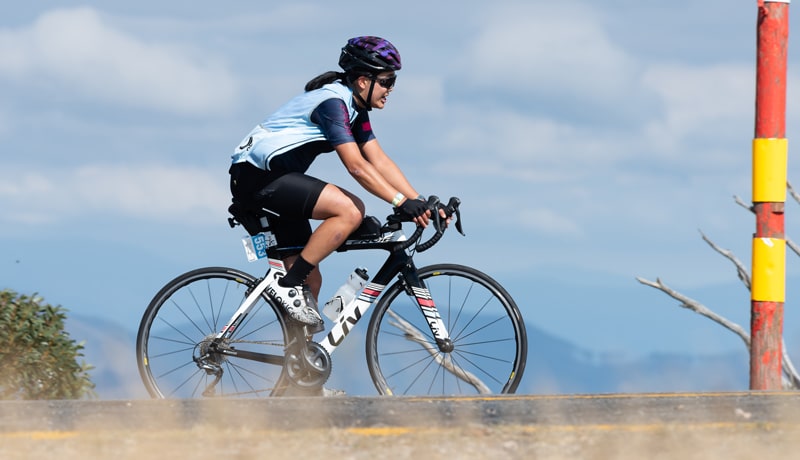Peaks Challenge
What lies ahead…
Ask the thousands who have ridden it before, Peaks Challenge is one of the toughest one-day cycling events in the world. Many have risen to the challenge, but many have also failed – succumbing to the unforgiving terrain, varying climate, relentless grind and grueling mental battle that’s unique to the event. It’s a formidable challenge but it’s one that should be on every cyclists’ bucket list.
While taking on the ride itself is unforgettable, the unique journey you’ll take to get to the start line promises to rival the experience itself. From the moment you make your pledge to ride Peaks Challenge, you’ll begin learning about your physical limits, mental strength and your ability to suffer, recover and persist.
Preparing for your Peaks Challenge campaign
Our 16-week Peaks Challenge training programs kick off in November, but there’s plenty you can do in the lead up to ensure you’re in the best possible position and condition to kick off your training.
Even if you’ve been dormant through winter, you’ve got plenty of time to build your base fitness and get where you need to be to smash your goals.
Three focus areas
Leading up to the start of our training programs, we’d recommend that you focus on three key things. At this point it’s not about overdoing it or rushing progress, but sustainably building up to the program so that you don’t burn out or lose motivation.
1. Consistency
The secret to successfully training for Peaks Challenge Falls Creek is simple: ride your bike a lot. To help prepare your body for that, you need to start getting out on the bike more and spring offers the perfect opportunity to build a routine. Even a regular commute by bike can offer a range of benefits.
Regular or even daily rides will improve your aerobic fitness and endurance while preparing your body for when you ramp up your training over summer.

2. Duration and volume
An important indicator of form before taking on Peaks Challenge is your ability to ride 200km or more comfortably. Over September and October slowly start to increase the length of your long rides and your weekly total kilometres on the bike.
It doesn’t have to be comparable to the 235km distance you’ll be tackling in March. With more than 20 weeks to go, you should be focused on progressively increasing your current fitness level to achieve sustainable improvement and conditioning. Don’t smash yourself, rather build your distance slowly and give your body time to adapt to avoid injuries.

3. Specificity
It’s never too early to start focusing on specific areas of improvement. Just as you start to increase your weekly distances, you should begin increasing how much climbing you’re doing.
Over the next couple of months, try and get out to some notable and varied climbs, riding them at a pace you feel comfortable with so you can start building on your elevation gained.
While this might seem obvious, it’s also a good time to also make sure you can do basic bike repairs like repairing a puncture. Even though the event has full route support, you’ll want to be self-sufficient when it comes to getting moving again.
At times, the road to Peaks Challenge may seem daunting. But by focusing on these three key areas over the next couple of months, you’ll build a solid base leading into our training plans.
Become our friend
Find out more about Bicycle Network and support us in making it easier for people to ride bikes.

